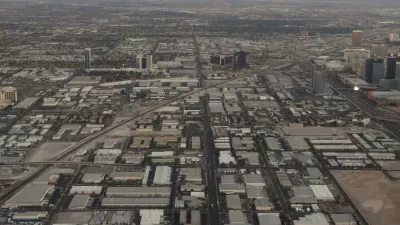Pete Saunders compares the disparate experiences of two Chicago suburbs, Naperville and Joliet, who took different approaches to legacy.
"There is a totally undervalued consideration when looking at the past, present and future of cities. We can't discount the importance of legacy -- the quality of past decisions, what's been given to us, and what we do with it," writes Saunders. When comparing Naperville and Joliet, Saunders finds that "[one] city thought it lacked a legacy, until it found one that enabled it to take its growth to the next level; the other allowed much of its legacy to fritter away and its residents chose to flee from it."
Starting from 1950, when Joliet was a small industrial city of 52,000 people and Naperville was a small farming community of 7,000, "only Naperville was able to grow, using the suburban development growth model." Why? "Because Naperville was unburdened with legacy. Naperville was surrounded by farmlands that were suitable for new single family home construction. The extension of the interstate highway network allowed Naperville to make highway access an attractive amenity to potential residents, and allowed the development of office complexes on the city's northern fringes."
"Naperville hit the suburban trifecta -- greenfields for residential development, highways and commter [sic] rail access to move people, and office parks to employ workers."
The policies of the two cities shifted in the 1990s, producing a legacy of land use decisions that are still influencing the growth of each cities today.
FULL STORY: Tale of Two Suburbs: Legacy, And What We Do With It

Alabama: Trump Terminates Settlements for Black Communities Harmed By Raw Sewage
Trump deemed the landmark civil rights agreement “illegal DEI and environmental justice policy.”

Study: Maui’s Plan to Convert Vacation Rentals to Long-Term Housing Could Cause Nearly $1 Billion Economic Loss
The plan would reduce visitor accommodation by 25% resulting in 1,900 jobs lost.

Why Should We Subsidize Public Transportation?
Many public transit agencies face financial stress due to rising costs, declining fare revenue, and declining subsidies. Transit advocates must provide a strong business case for increasing public transit funding.

Paris Bike Boom Leads to Steep Drop in Air Pollution
The French city’s air quality has improved dramatically in the past 20 years, coinciding with a growth in cycling.

Why Housing Costs More to Build in California Than in Texas
Hard costs like labor and materials combined with ‘soft’ costs such as permitting make building in the San Francisco Bay Area almost three times as costly as in Texas cities.

San Diego County Sees a Rise in Urban Coyotes
San Diego County experiences a rise in urban coyotes, as sightings become prevalent throughout its urban neighbourhoods and surrounding areas.
Urban Design for Planners 1: Software Tools
This six-course series explores essential urban design concepts using open source software and equips planners with the tools they need to participate fully in the urban design process.
Planning for Universal Design
Learn the tools for implementing Universal Design in planning regulations.
Smith Gee Studio
Alamo Area Metropolitan Planning Organization
City of Santa Clarita
Institute for Housing and Urban Development Studies (IHS)
City of Grandview
Harvard GSD Executive Education
Toledo-Lucas County Plan Commissions
Salt Lake City
NYU Wagner Graduate School of Public Service





























